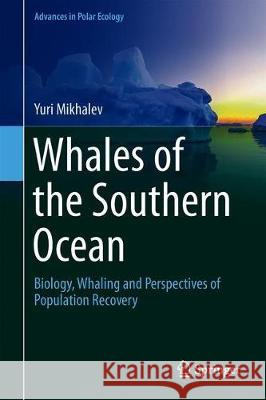Whales of the Southern Ocean: Biology, Whaling and Perspectives of Population Recovery » książka
topmenu
Whales of the Southern Ocean: Biology, Whaling and Perspectives of Population Recovery
ISBN-13: 9783030292515 / Angielski / Twarda / 2020 / 382 str.
Whales of the Southern Ocean: Biology, Whaling and Perspectives of Population Recovery
ISBN-13: 9783030292515 / Angielski / Twarda / 2020 / 382 str.
cena 726,29
(netto: 691,70 VAT: 5%)
Najniższa cena z 30 dni: 693,97
(netto: 691,70 VAT: 5%)
Najniższa cena z 30 dni: 693,97
Termin realizacji zamówienia:
ok. 22 dni roboczych
Bez gwarancji dostawy przed świętami
ok. 22 dni roboczych
Bez gwarancji dostawy przed świętami
Darmowa dostawa!
Kategorie:
Kategorie BISAC:
Wydawca:
Springer
Seria wydawnicza:
Język:
Angielski
ISBN-13:
9783030292515
Rok wydania:
2020
Dostępne języki:
Numer serii:
000793052
Ilość stron:
382
Oprawa:
Twarda











